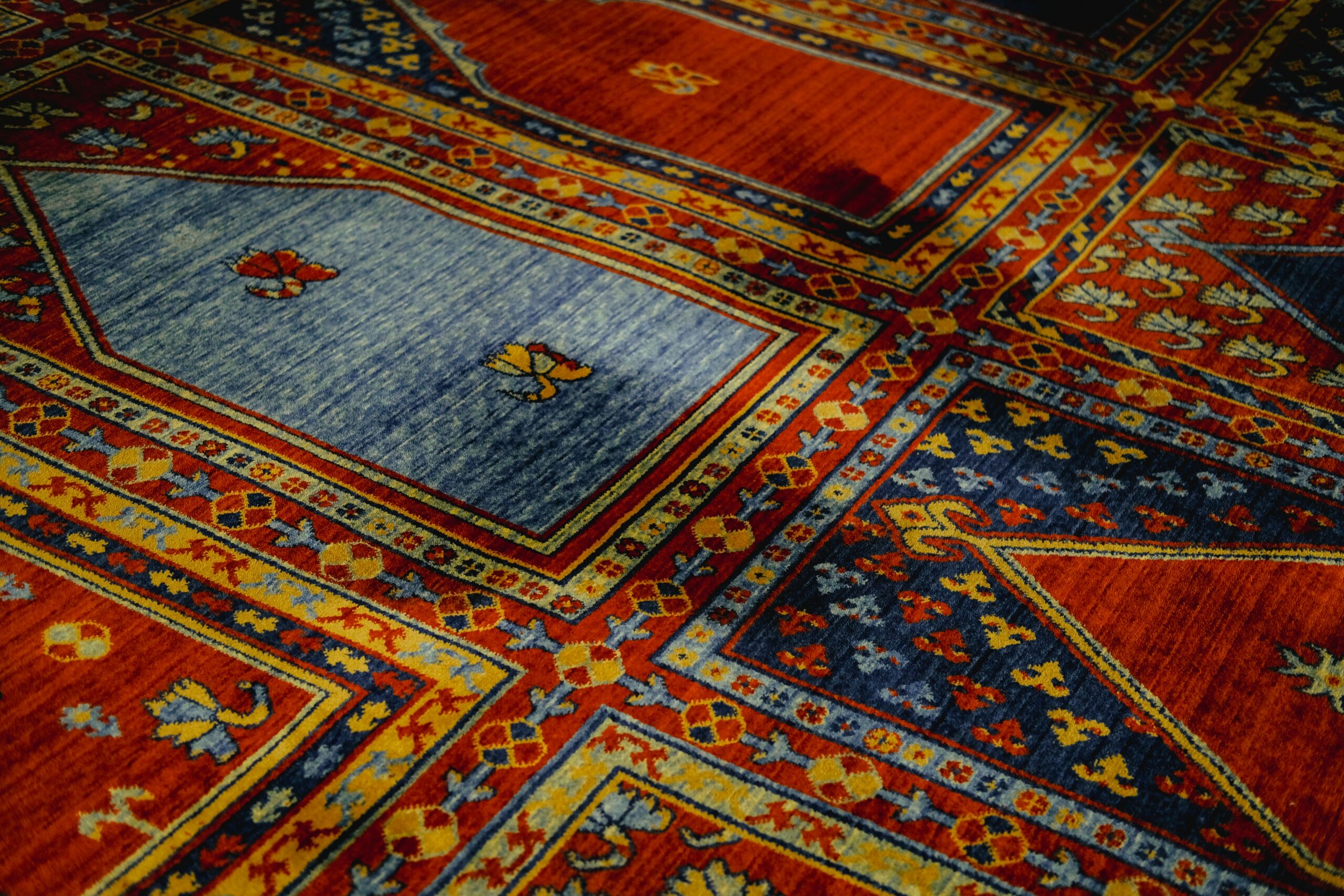Does Renters Insurance Cover Carpet Damage?
Spoiler alert: Carpet damages probably won’t be covered by your renters insurance.

Spoiler alert: Carpet damages probably won’t be covered by your renters insurance.

Dealing with unexpected carpet damage in a rental home can be frustrating. Often, renters insurance doesn’t cover this type of damage, as it typically protects personal belongings rather than the building structure. As a result, carpet repairs usually fall under the landlord’s responsibilities.
However, specific cases might change this. Let’s explore the ins and outs of carpet damage and your renters insurance policy.
Generally, renters insurance doesn’t cover carpet damage. When you rent an apartment, your landlord is typically responsible for maintaining the physical structure of the building, including the walls, windows, and carpets.
Renters insurance covers you and your personal property, aka your stuff, against things like theft, fires, vandalism, windstorms, and more—as well as injuries someone might sustain at your place.
Landlords often have their own insurance, called landlord insurance, to cover the structure of their rental homes. If the damage to the carpet in your rental home was caused by a covered peril, your landlord’s insurance may be able to cover the repairs.
Now, if you or a guest damaged the carpet, you might foot the bill—usually through your security deposit. Depending on what happened, your renters insurance liability coverage could help. For context, carpet repairs typically run $140 to $400, with most people paying around $250, according to Angi’s 2025 cost guide.
Before moving in, or if you’re already settled, it’s a good idea to review your lease agreement. This document often outlines the responsibilities of both the landlord and the tenant, including who pays for what type of damage.
Curious about who should cover costs for different issues in your rental home? Check out our guide to discover whether the responsibility could fall on you or your landlord.

We all love our furry friends, but they can sometimes wreak havoc on our living spaces. Unfortunately, most renters insurance policies don’t cover pet damage to the structure of your rental, including carpets.
If you’re moving into a new apartment with your furry friend, chances are your landlord may require you to purchase pet liability insurance. Pet liability insurance can help protect you if your pet causes damage to someone else’s property or injures someone else, like a neighbor.
However, it generally won’t cover damage your pet does to your rental unit’s carpet. For instance, if your dog scratches up the carpet, you’re likely responsible for covering the repair costs.
If you have a playful or mischievous pet and want extra protection against potential pet damage to your rental unit, Lemonade offers an optional Tenant Pet Damage add-on in most states.* This coverage provides up to $500 annually to help cover the cost of pet-related damage repairs, after you’ve paid any security or pet deposits you may have.
There might be exceptions if your pet’s actions lead to a covered peril. For example, if your cat knocks over a candle and starts a small fire, resulting in carpet damage, your renters insurance may cover the damage, as fires are typically a covered peril. However, it’s always best to check your policy to understand the nuances of your coverage.
If you have a pet, consider taking steps to reduce the chance of potential damage, including:
These steps can help reduce the risk of damage to carpets and other parts of your rental property.
Renters insurance will not cover water damage to carpets, as most events that lead to this damage, such as burst pipes, will be your landlord’s responsibility.
Imagine you live on the second floor of a three-story apartment building and wake up in the middle of the night to discover your carpet is soaked with water. It turns out that an old pipe burst in your upstairs neighbor’s apartment, leading to water damage in your unit. Since you neither own your apartment nor the pipe that caused the damage, your landlord is likely responsible for covering the carpet repair costs.
However, you still have the responsibility to notify your landlord of the damage so they can begin the repair process.
Using the same example, let’s say your furniture also sustained water damage from the burst pipe. In this case, your renters insurance policy may cover the cost of repairing or replacing your personal furniture, since your personal property was damaged from the event.
Just a heads up, renters insurance doesn’t cover all types of water damage, such as damage from flooding. For protection from flooding, you would need to buy flood insurance.
Spills are a frequent and arguably unavoidable issue, especially in homes with children or pets. Unfortunately, renters insurance will not cover the cost of cleaning spills or stains on the carpet of your rental home.
While your landlord is generally responsible for maintaining the structure of a rental property, you’ll likely be responsible for any stains that you or a guest cause to the carpet. If a security deposit was collected when you moved in, your landlord will likely use those funds to cover the costs of repairing or replacing the carpet. It’s important to note, that if the repair costs exceed your security deposit, you could be charged for the additional expenses.
On the flip-side, if your carpet was already stained before you moved in, you may not be responsible for the cost to repair the carpet. If this is the case on move-in day, it’s best to document the damage by taking pictures, and notify your landlord immediately to resolve the issue, and ensure that you are not held liable.
When it comes to spills and stains, prevention is key. To prevent permanent stains:
No, renters insurance will not cover any damage to carpet caused by wear and tear. Aside from the fact that your landlord is primarily responsible for the structure of your rental unit, renters insurance is designed to protect you and your personal property against sudden and unexpected events, such as fire, theft, or vandalism.
As normal wear and tear is expected over time, most insurance, including renters insurance and landlord insurance, will not cover damage caused by gradual wear and tear.
To slow down the gradual damage of wear and tear, you can:
While renters insurance typically doesn’t cover carpet damage, there are scenarios where you might be protected by your renters insurance policy.
Renters insurance is designed to protect against specific events, aka “named perils”, such as fire, smoke, and certain types of water damage.
While accidental damage is not typically covered, instances like knocking over a candle that leads to a small fire may be covered under renters insurance policies, since fire is a covered peril.
Let’s say you have your friend over for a movie night, and your friend accidentally knocks over a candle on the coffee table, leading to a small fire that damages the carpet. Since fire is a covered peril under your renters insurance policy, it may help cover the costs of repairing or replacing the carpet under your personal liability coverage.
Additionally, if you install the carpet in your rental home, at your expense, your renters insurance policy may be able to provide coverage up to 10% of your personal property coverage.
Keep in mind that you’ll need to pay your deductible before the insurance kicks in to cover the remaining costs. It’s also best to check with your landlord first, as their policy may cover the damage.
Understanding the ins and outs of your renters insurance policy can help manage your expectations when it comes to carpet damage and other potential issues. While renters insurance likely won’t cover carpet damage in your rental home, it offers valuable protection against many unexpected events, including fires, theft, or storm damage.
Here’s what a typical renters insurance policy usually covers:
Ready to get started? Click below to get your free renters insurance quote today.
Yes, in general, personal rugs that you brought into your rental unit would be covered by renters insurance under your personal property coverage, after your deductible has been applied.
If your carpet becomes damaged, you’ll want to review your lease agreement to check if you or your landlord are responsible for the damages. Then, notify your landlord as soon as possible and document the damage by taking photos.Even if the damage is your responsibility to repair, such as spilling red wine on a white carpet, your landlord may be able to provide advice on which cleaning solutions to use, or give recommendations for professional cleaners who can help repair the damage.
No, renters insurance will not cover damage to tile flooring, as this damage to the structure of your rental home is typically the responsibility of the landlord.
No, since hard-wood or parquet flooring are a part of the structure of your rental, any damages are typically the responsibility of the landlord to repair.
When it comes to renters insurance, most companies cover personal property (aka your stuff), additional living expenses, and personal liability, not carpeting. Most renters insurance policies will not offer the option to include coverage for carpet damage.
*Not available in NY, IN, WA, and FL
A few quick words, because we <3 our lawyers: This post is general in nature, and any statement in it doesn’t alter the terms, conditions, exclusions, or limitations of policies issued by Lemonade, which differ according to your state of residence. You’re encouraged to discuss your specific circumstances with your own professional advisors. The purpose of this post is merely to provide you with info and insights you can use to make such discussions more productive! Naturally, all comments by, or references to, third parties represent their own views, and Lemonade assumes no responsibility for them. Coverage and discounts may not be available in all states.
Please note: Lemonade articles and other editorial content are meant for educational purposes only, and should not be relied upon instead of professional legal, insurance or financial advice. The content of these educational articles does not alter the terms, conditions, exclusions, or limitations of policies issued by Lemonade, which differ according to your state of residence. While we regularly review previously published content to ensure it is accurate and up-to-date, there may be instances in which legal conditions or policy details have changed since publication. Any hypothetical examples used in Lemonade editorial content are purely expositional. Hypothetical examples do not alter or bind Lemonade to any application of your insurance policy to the particular facts and circumstances of any actual claim.